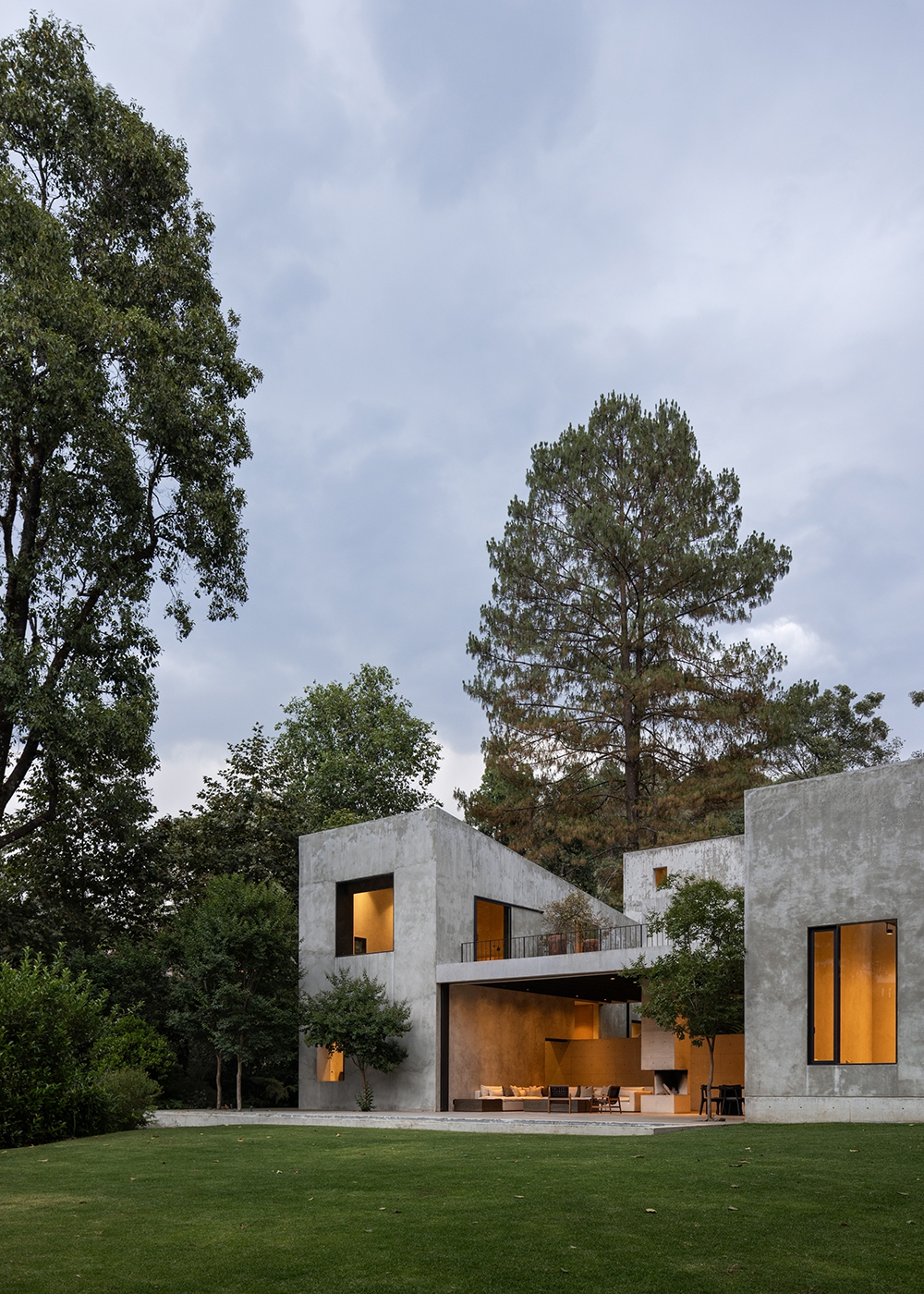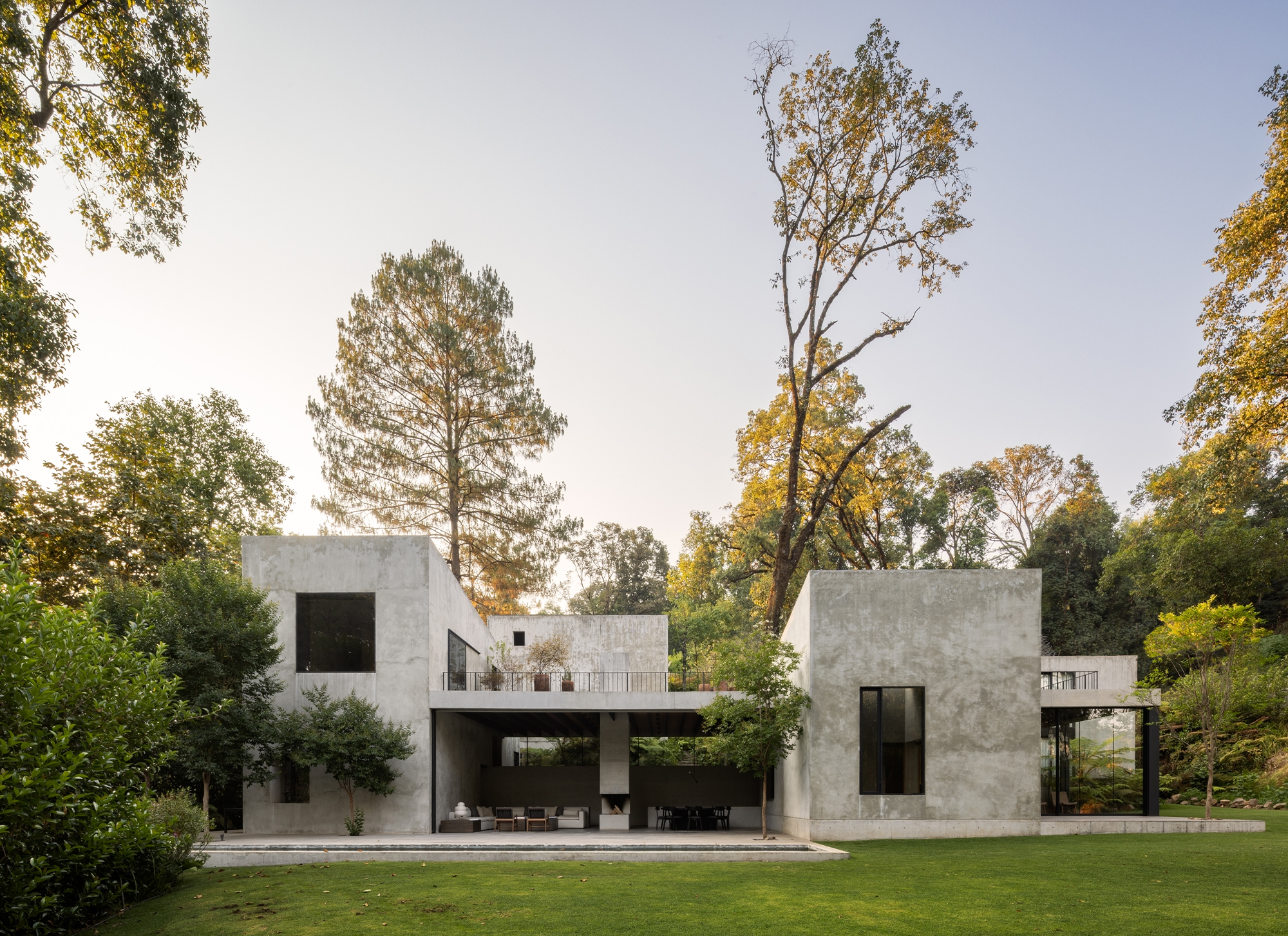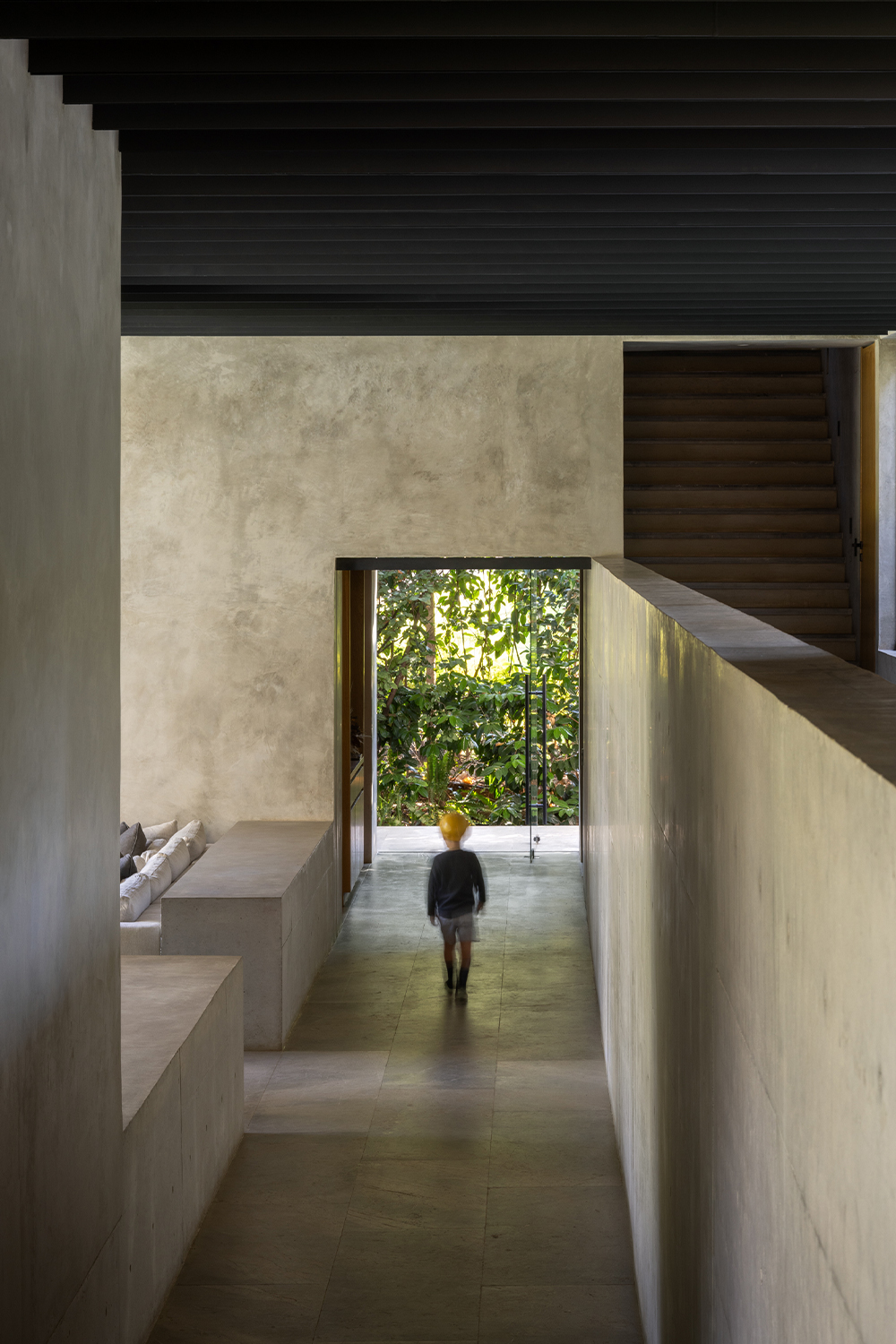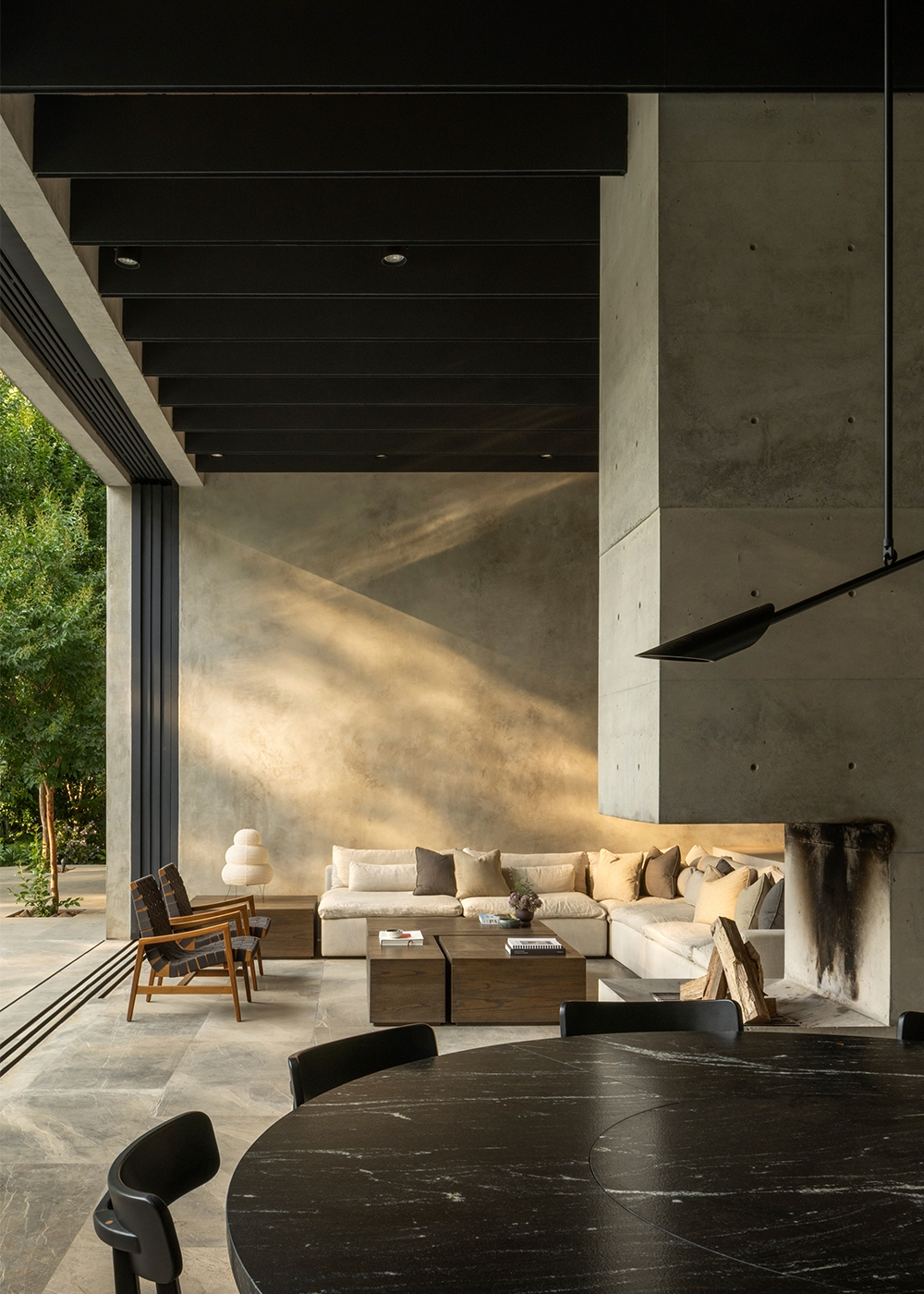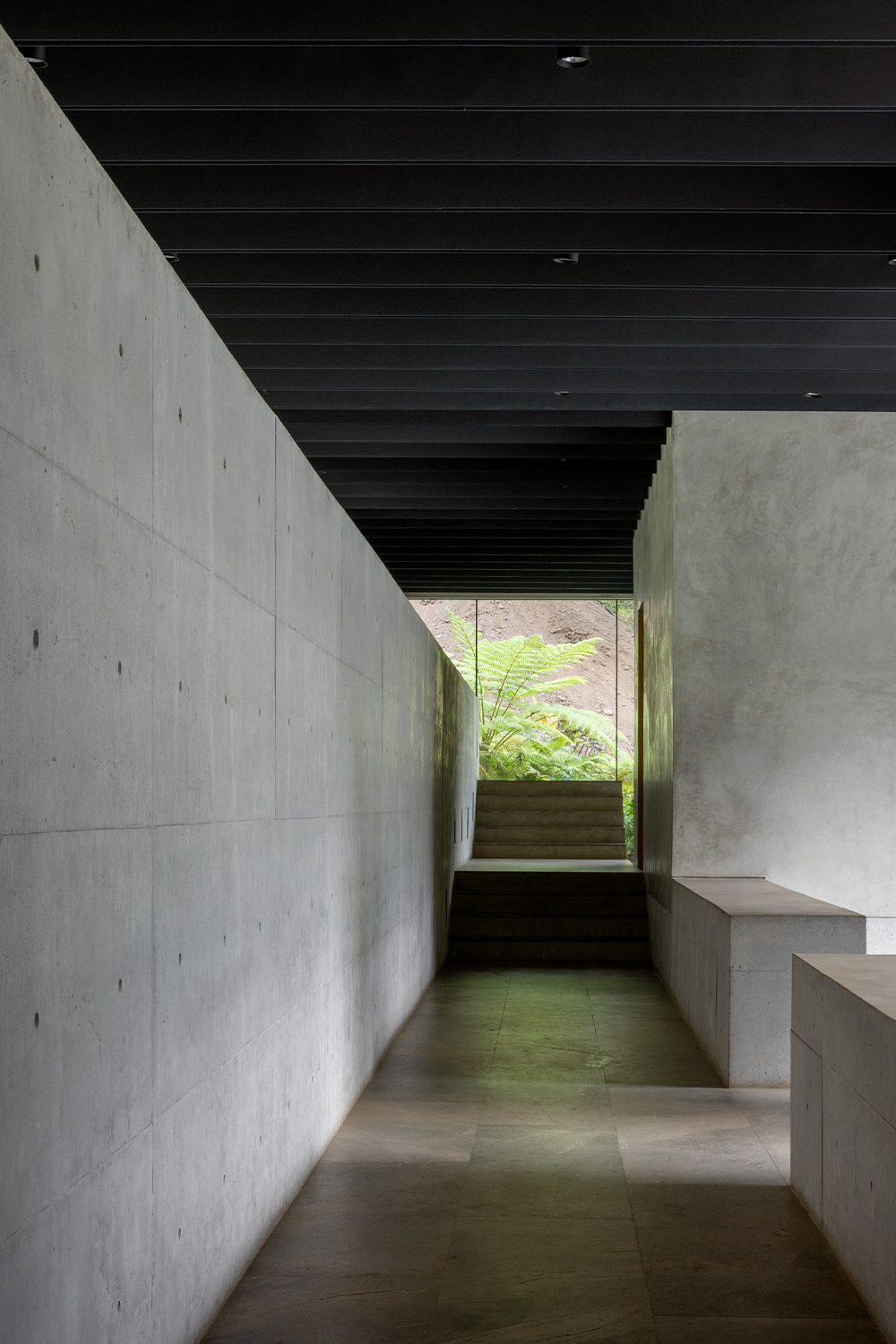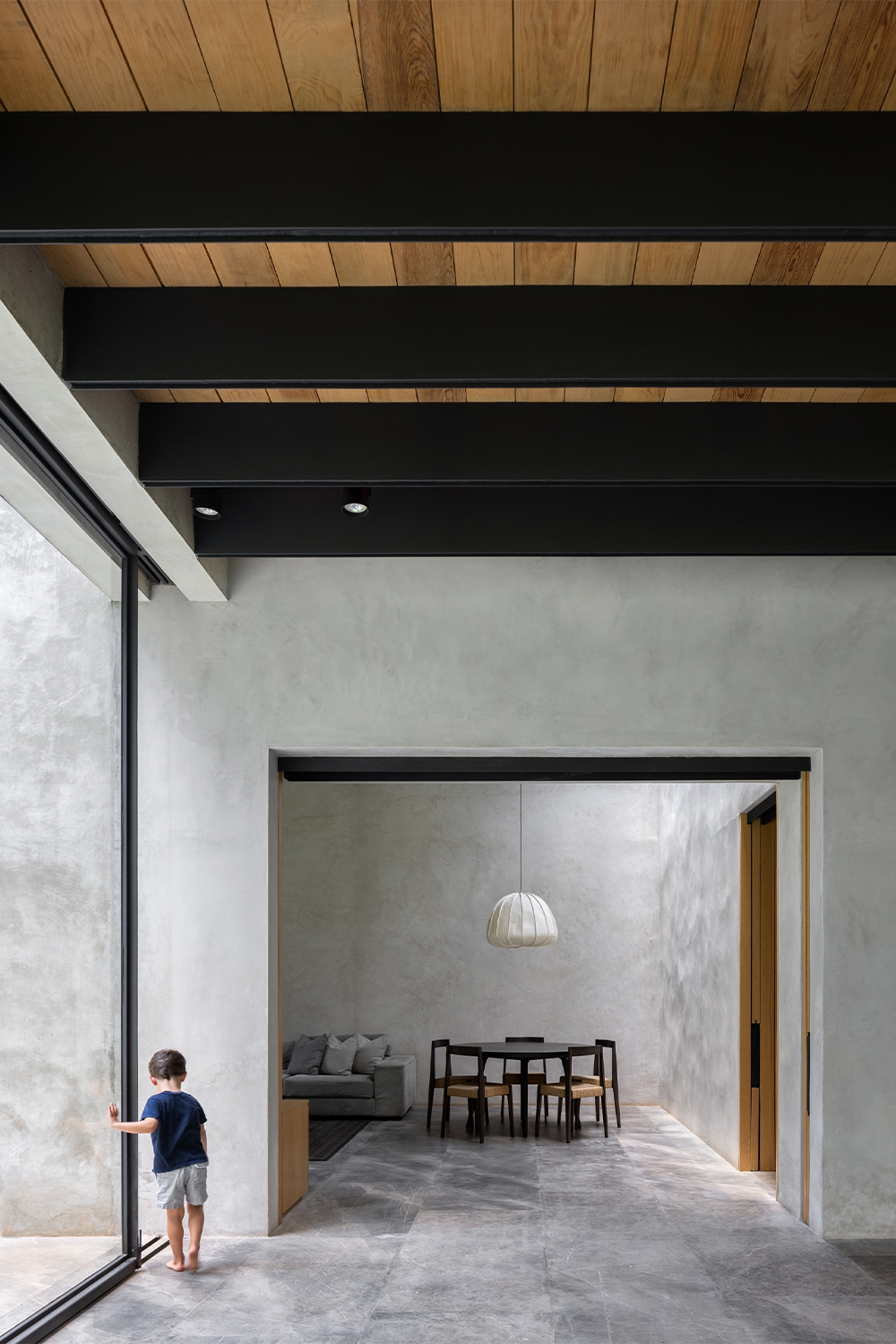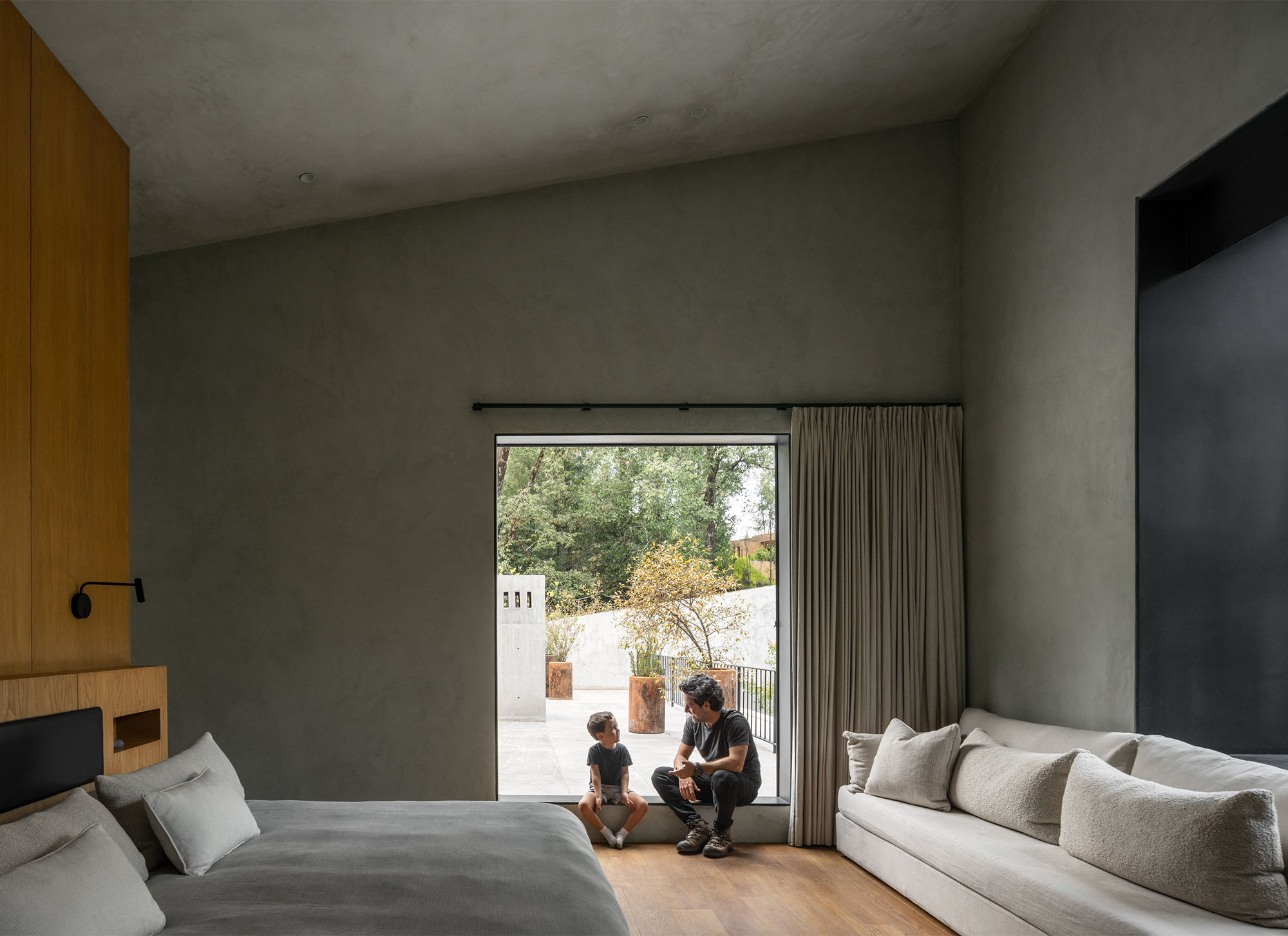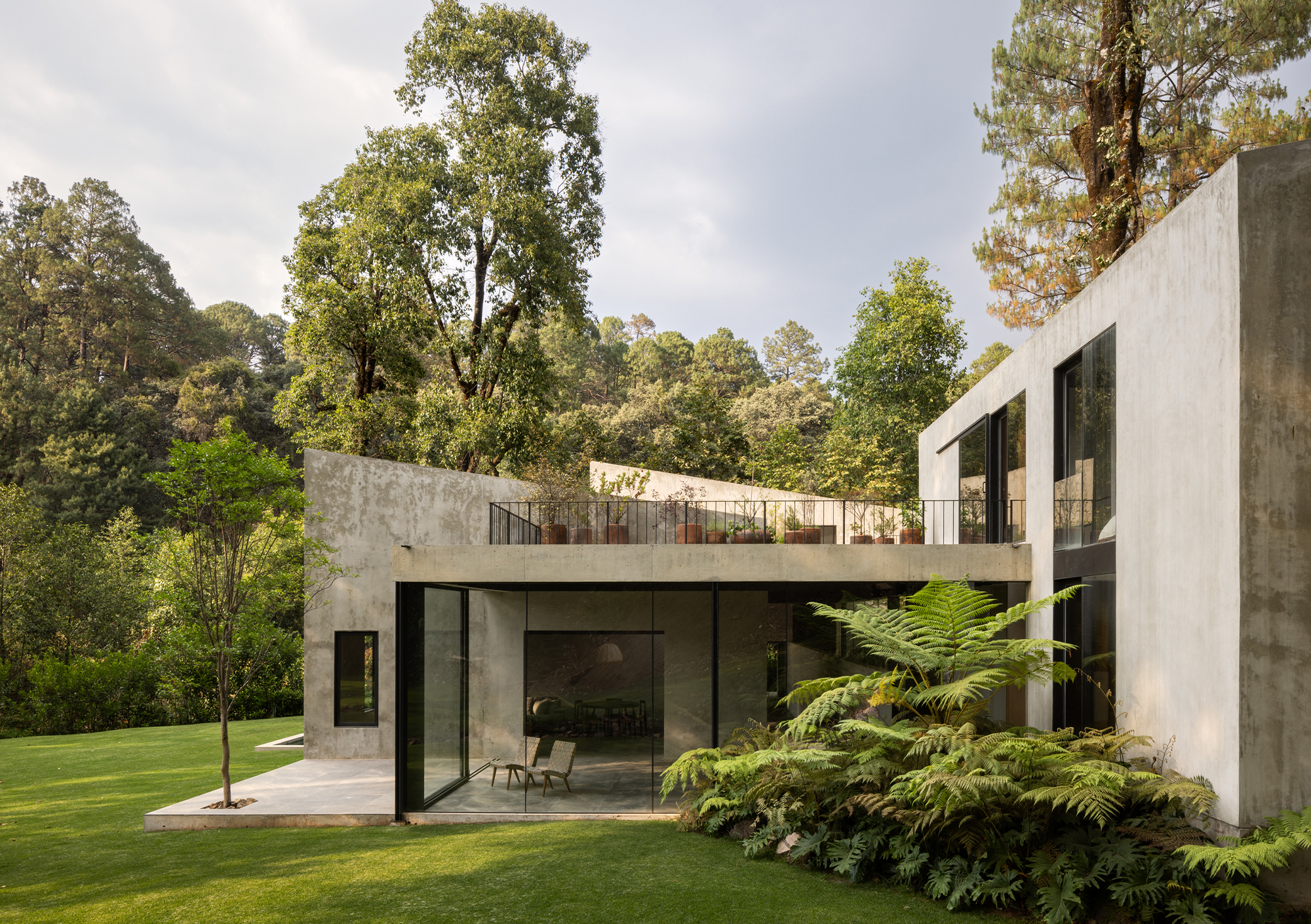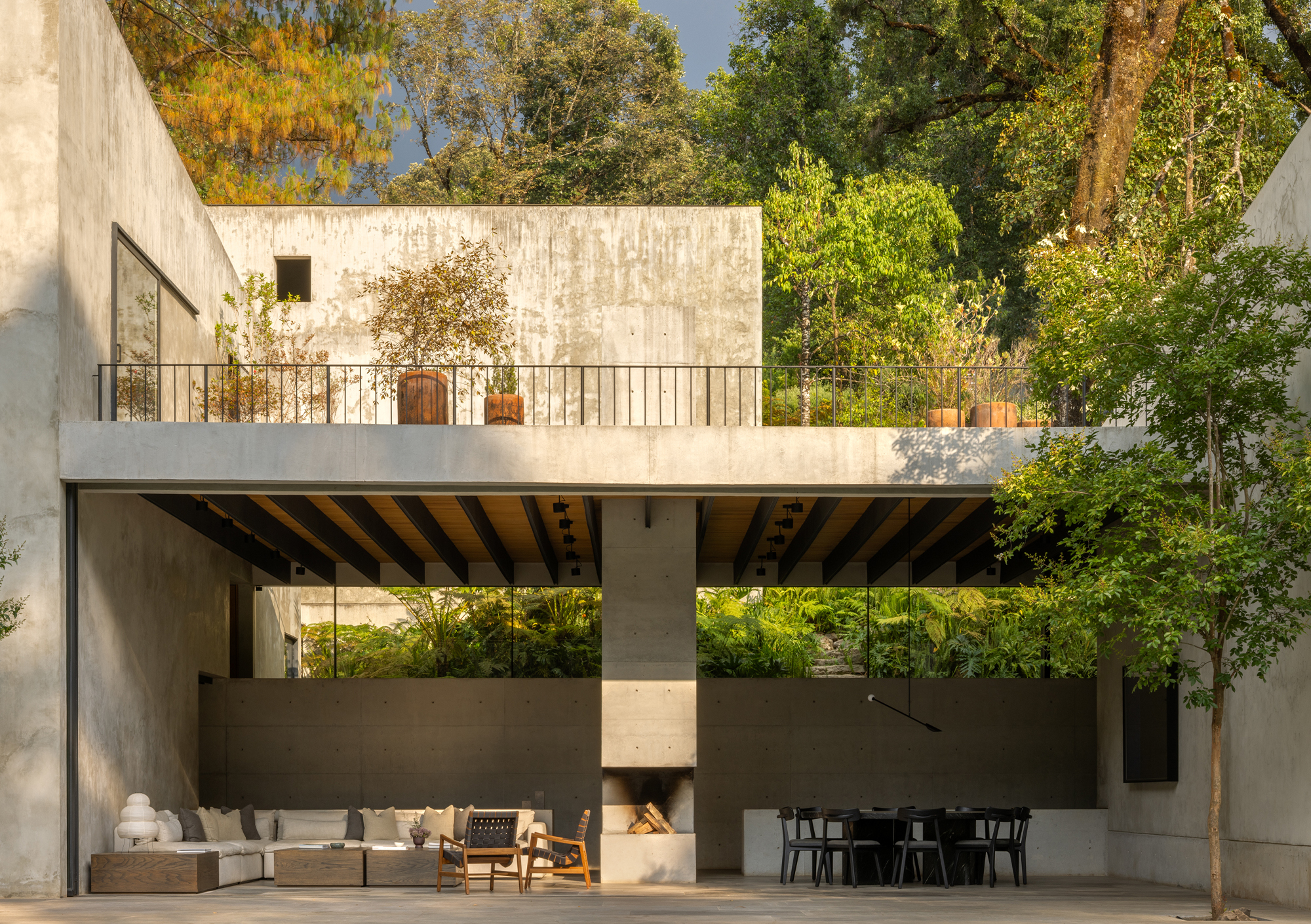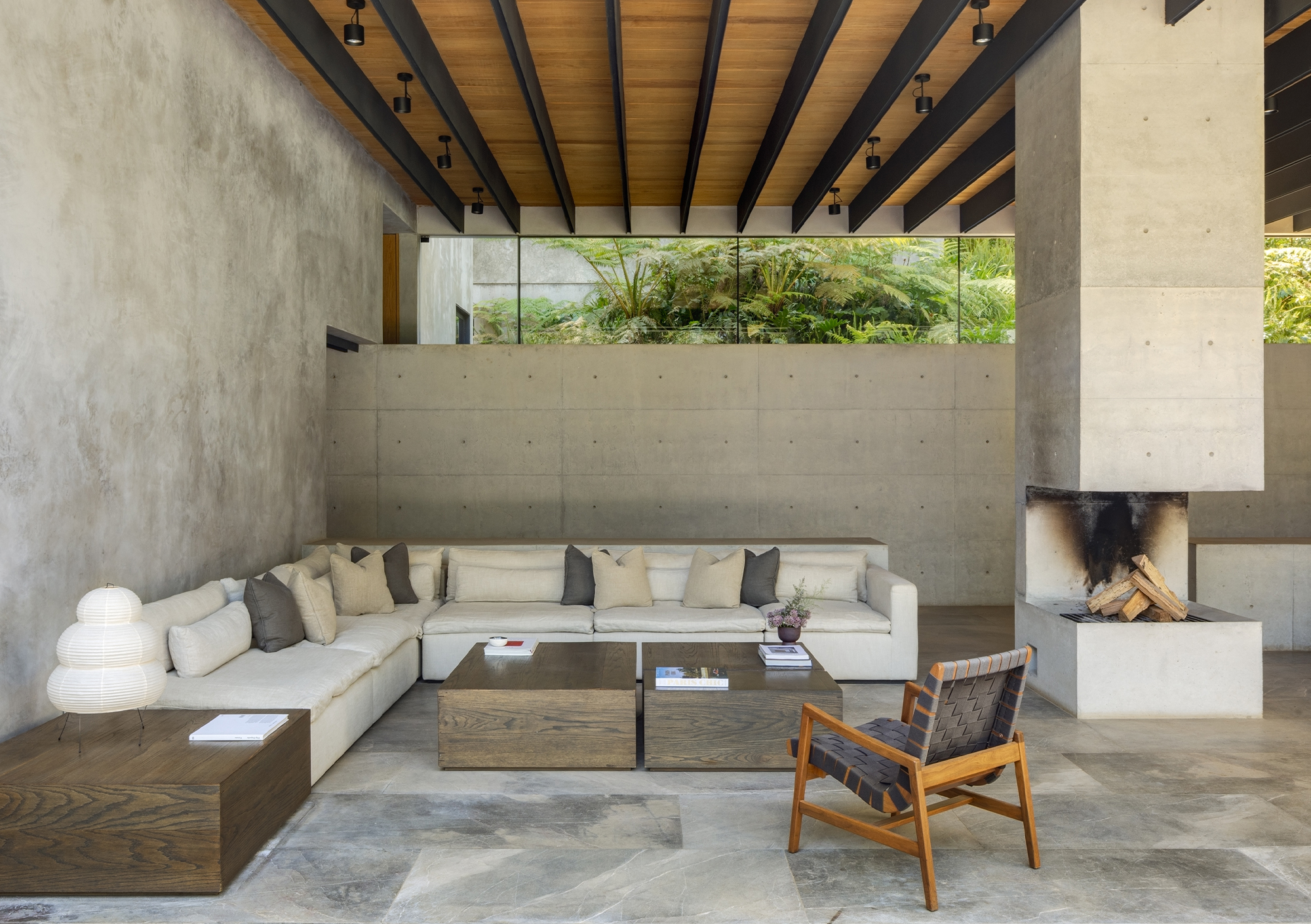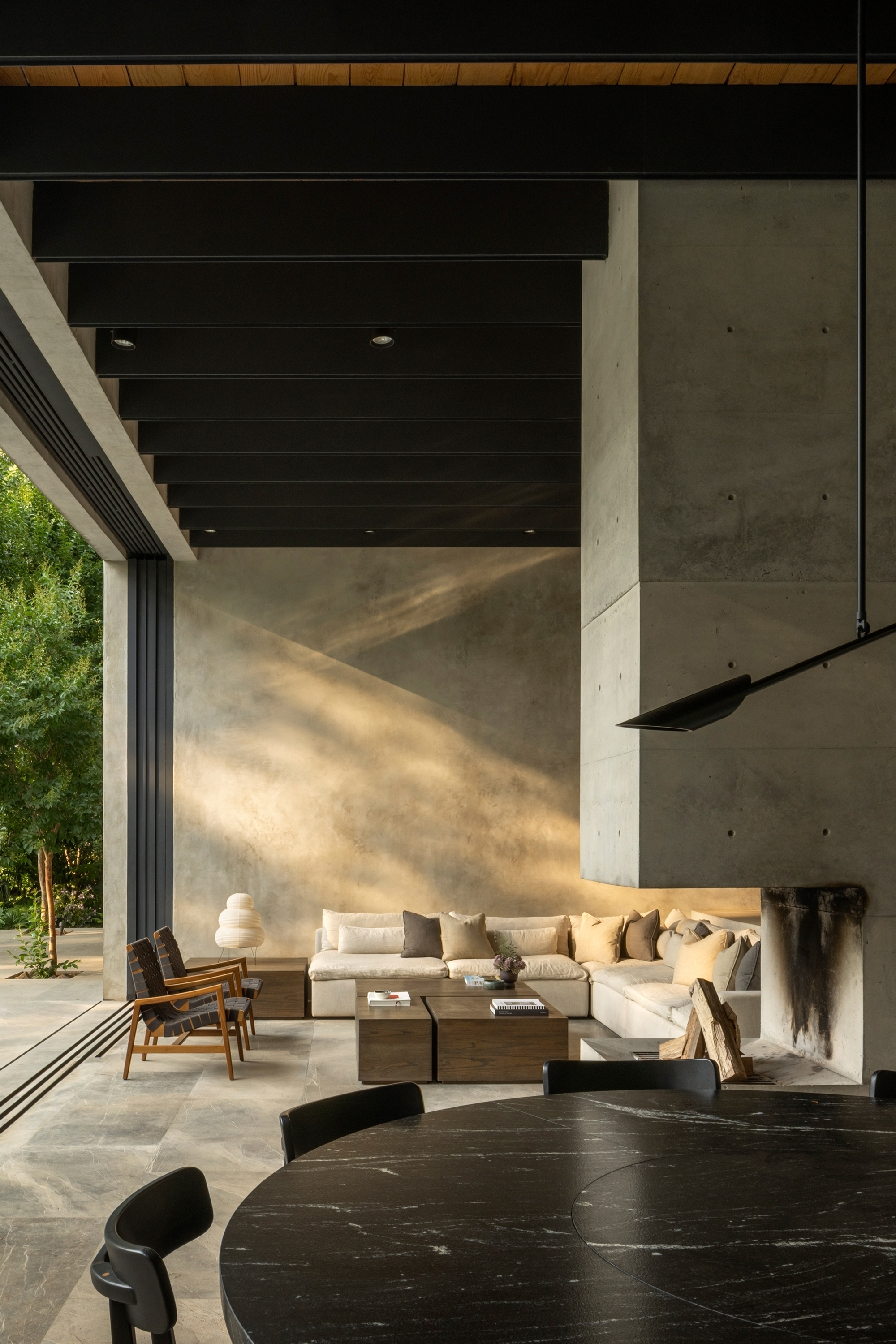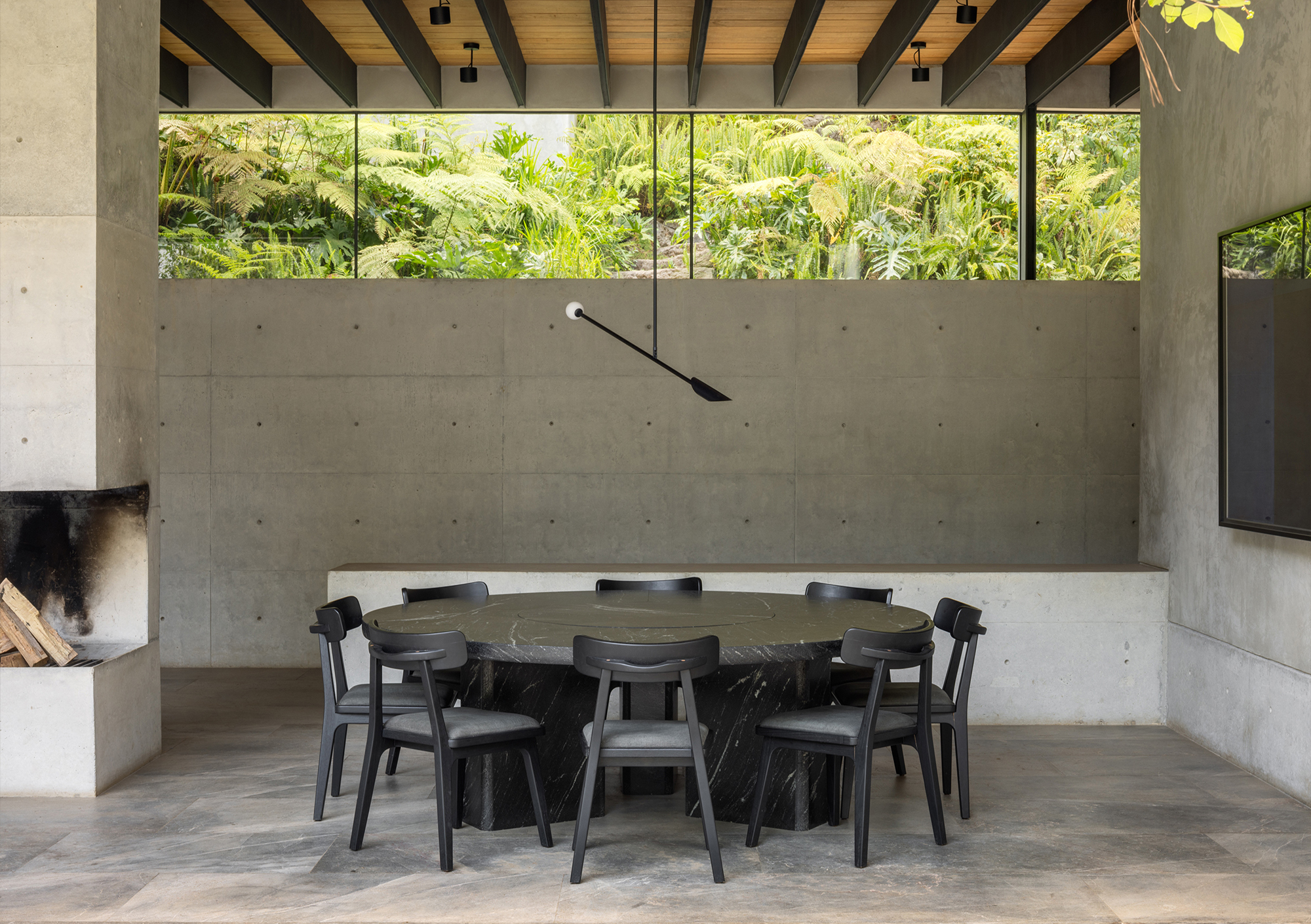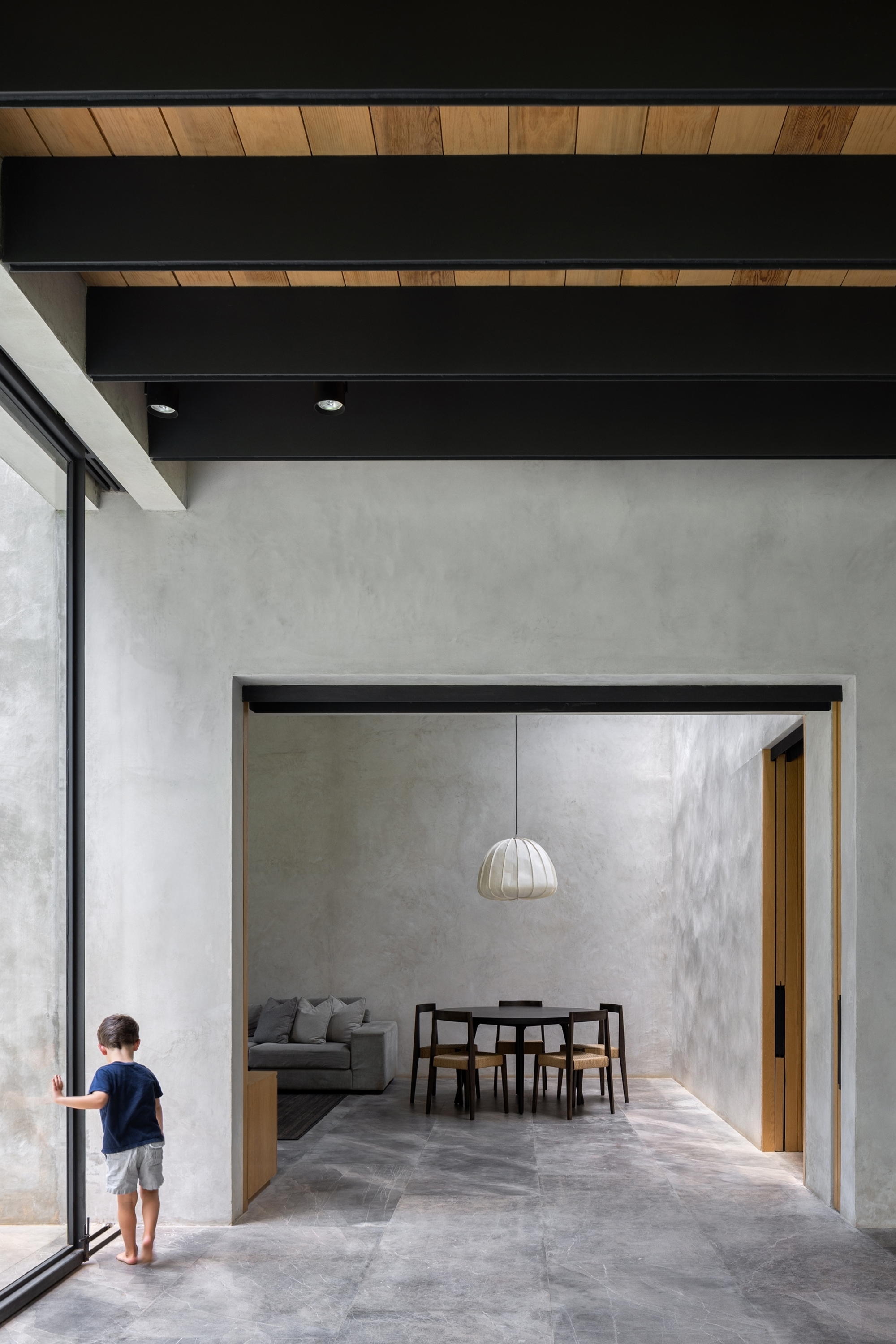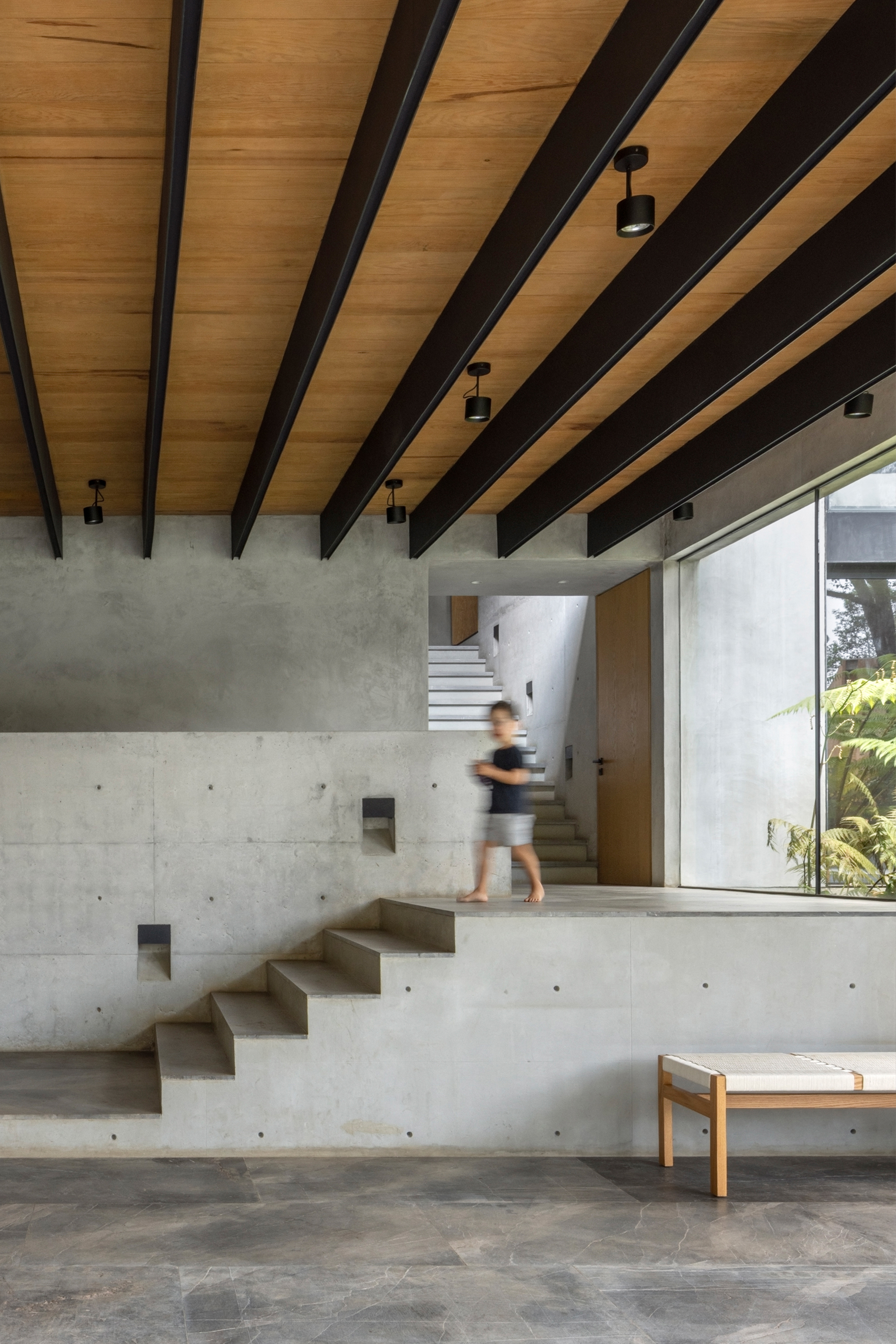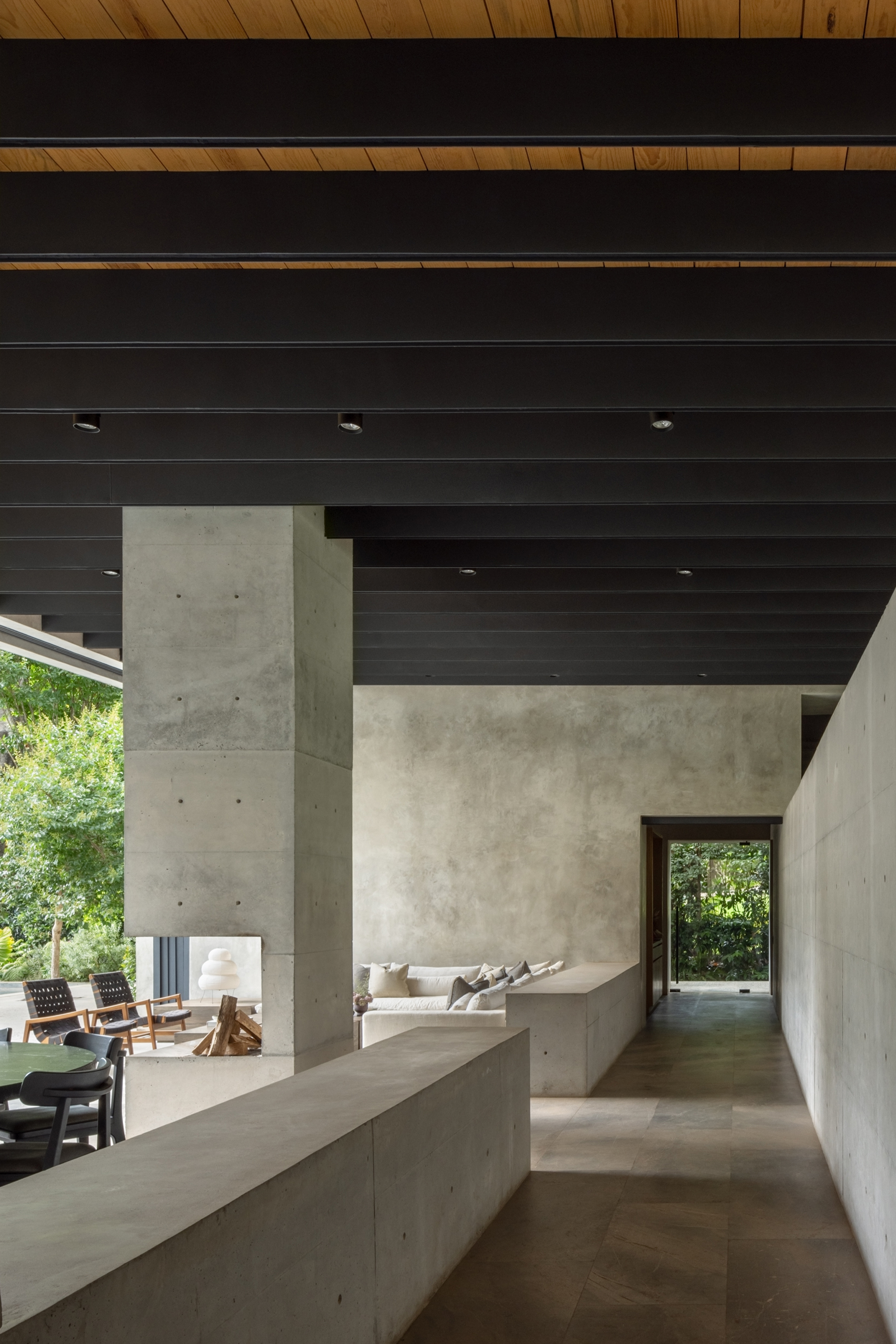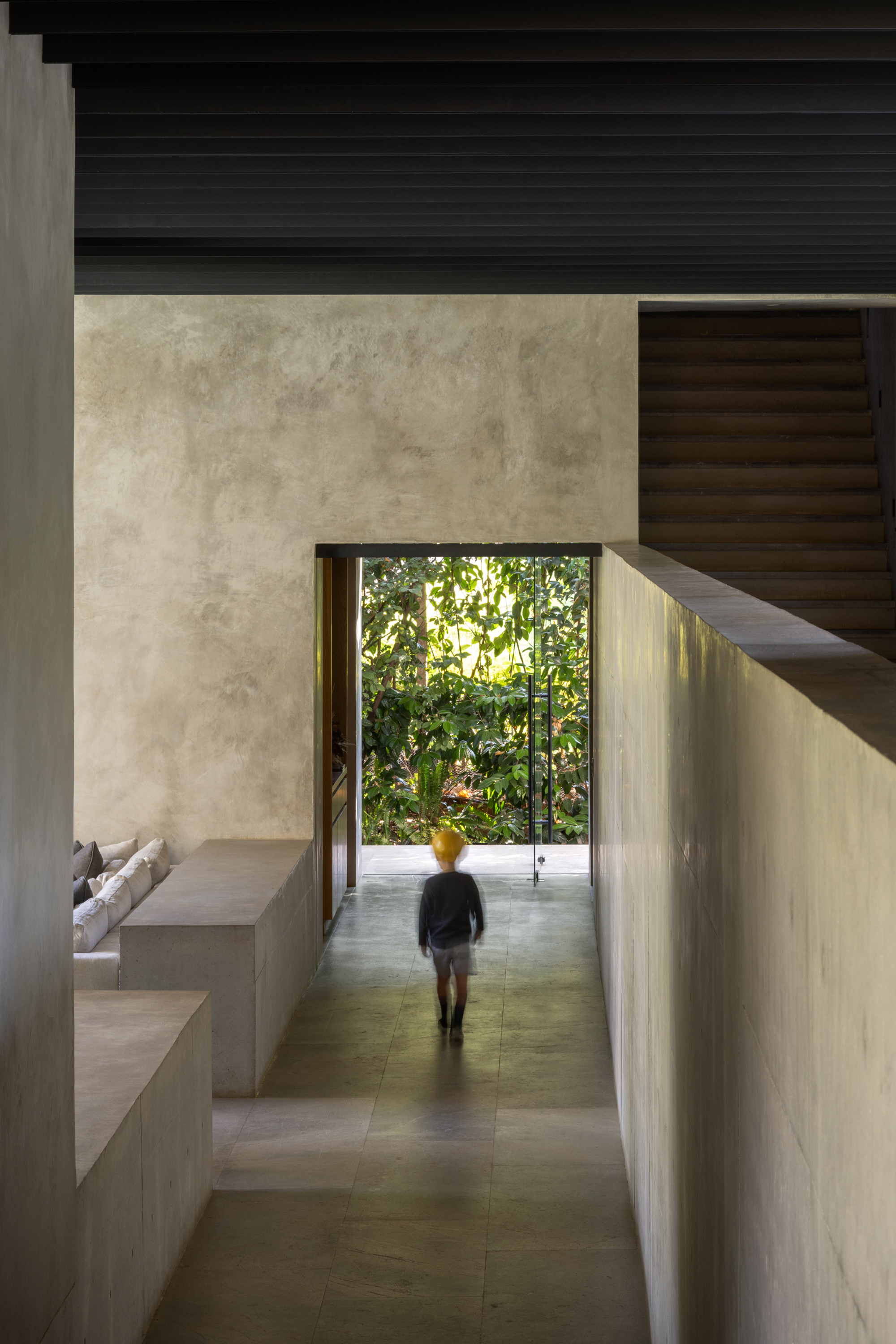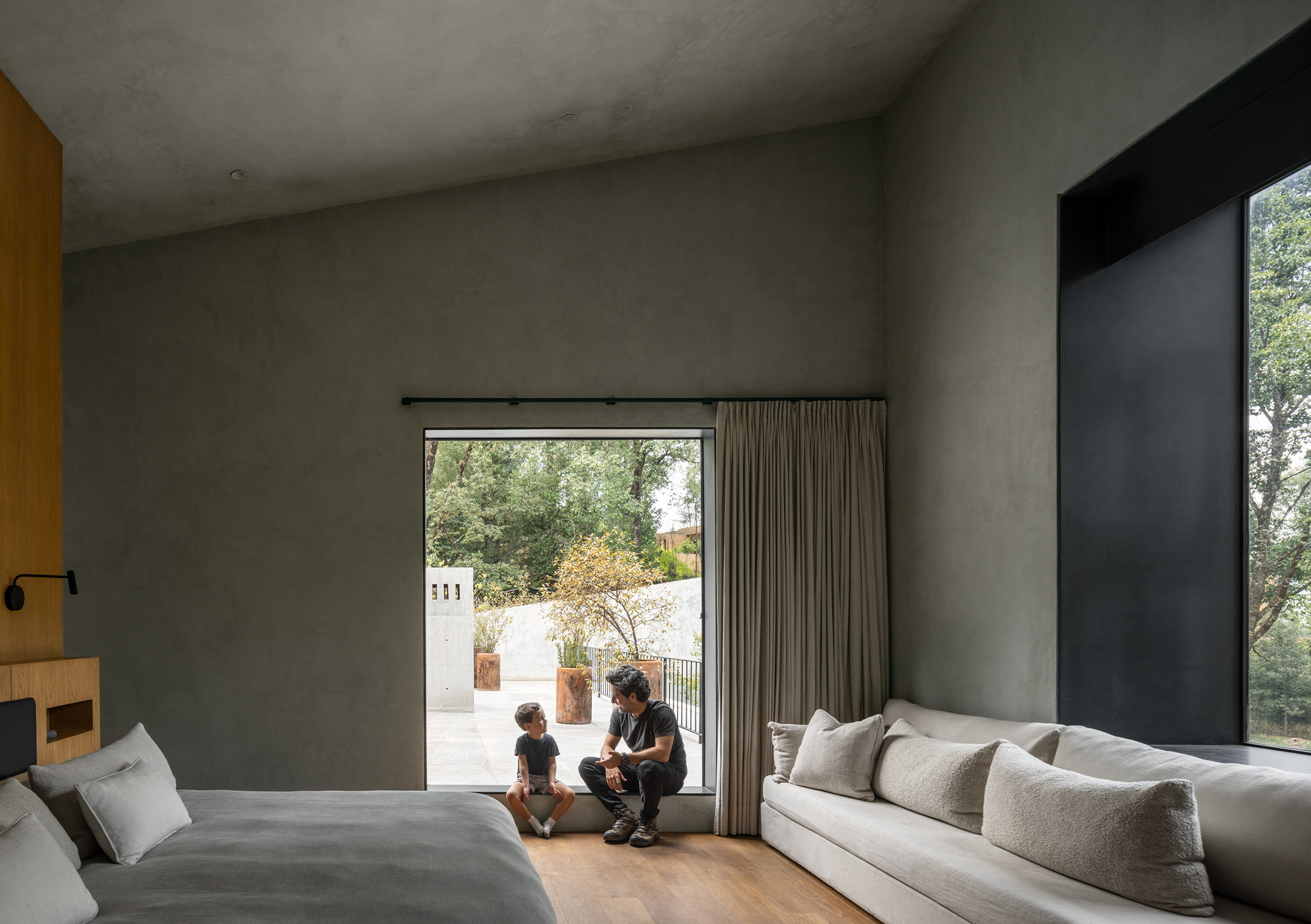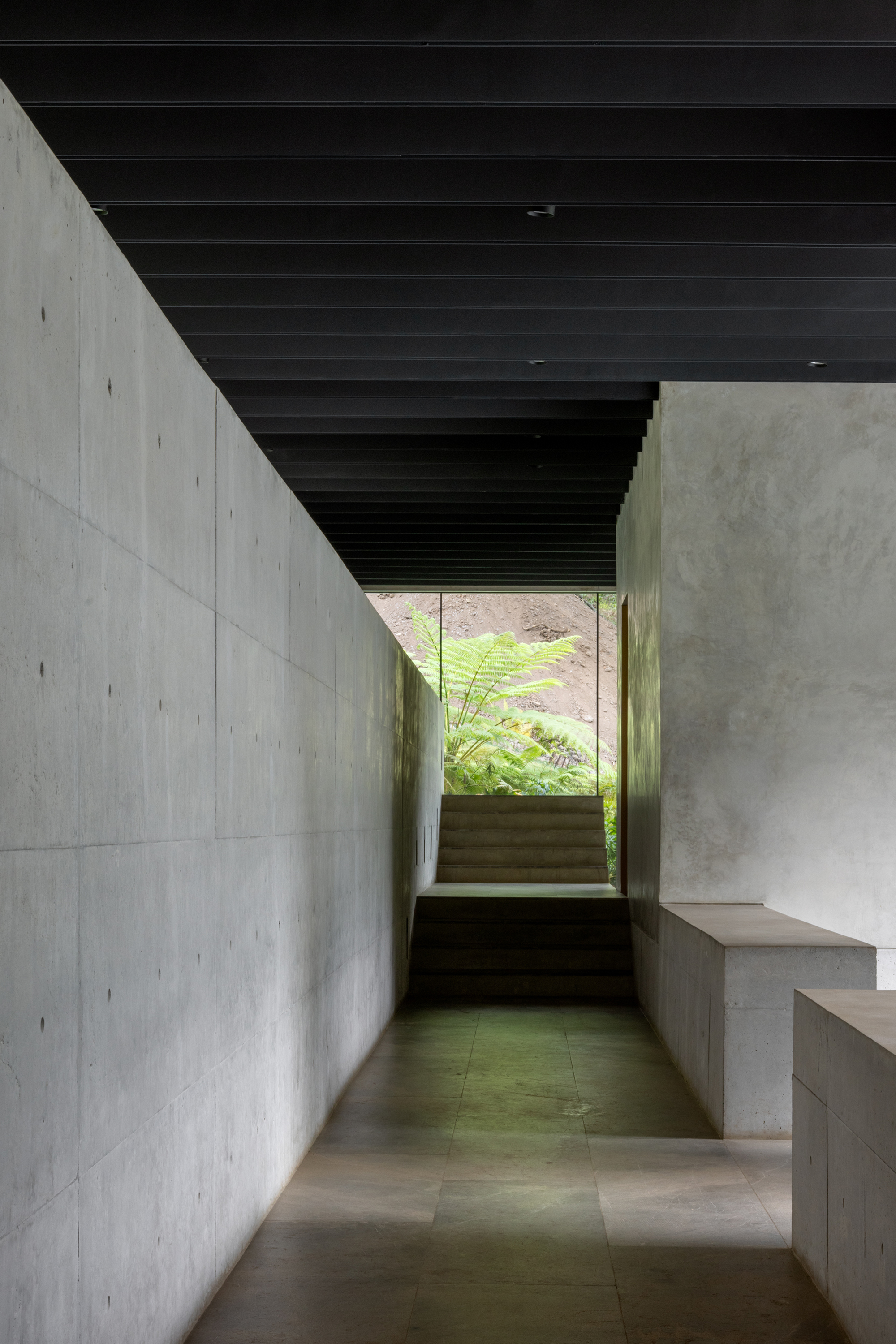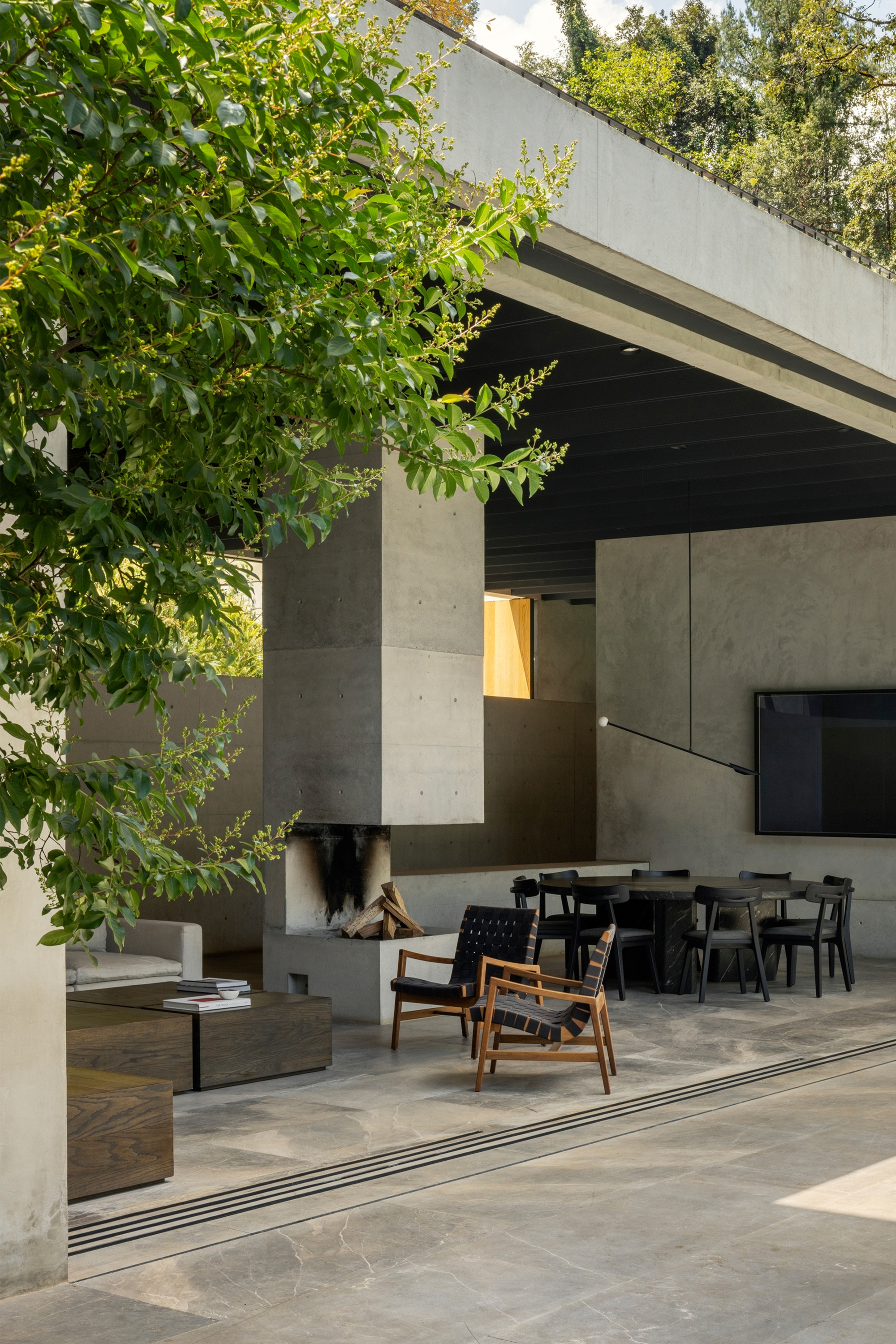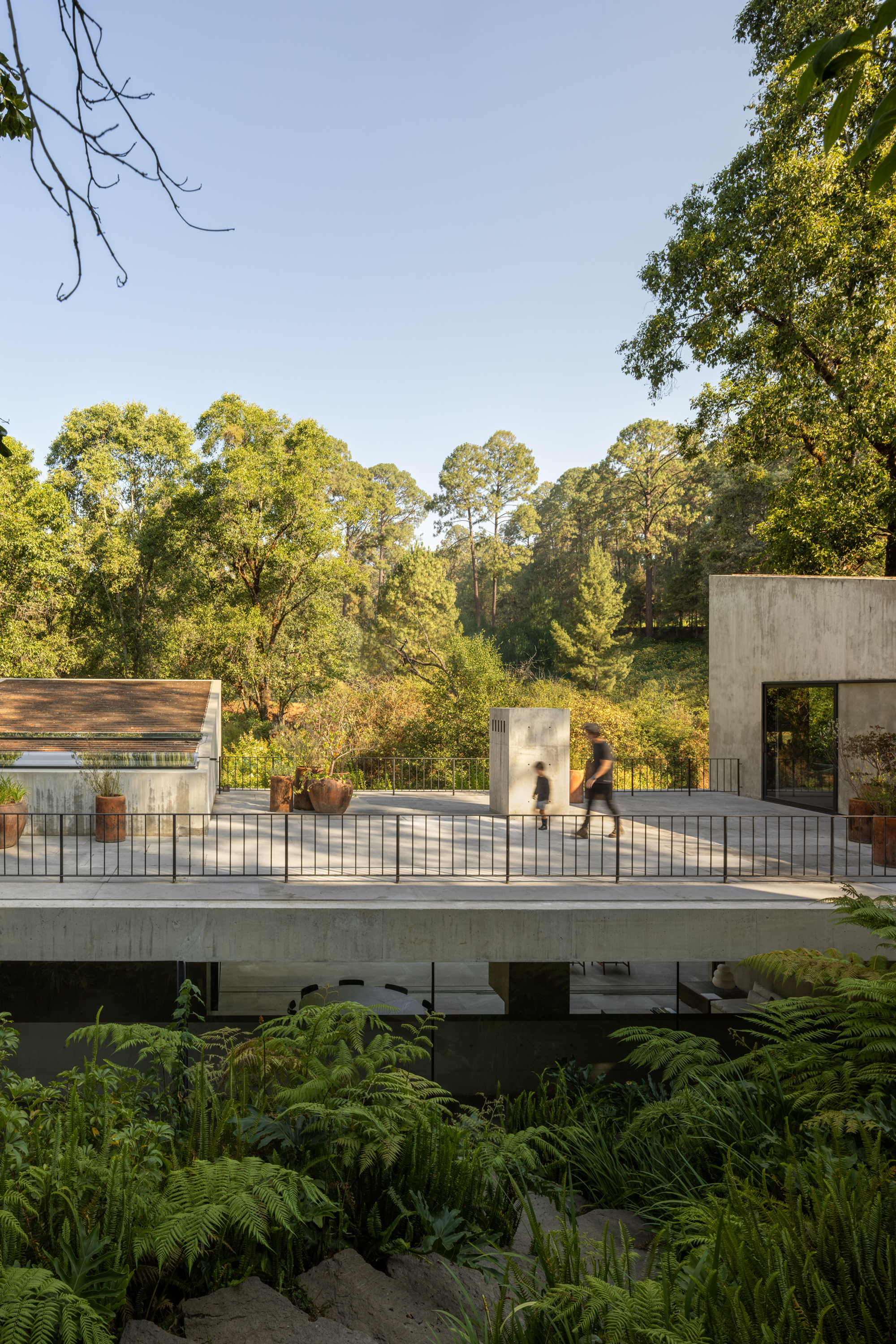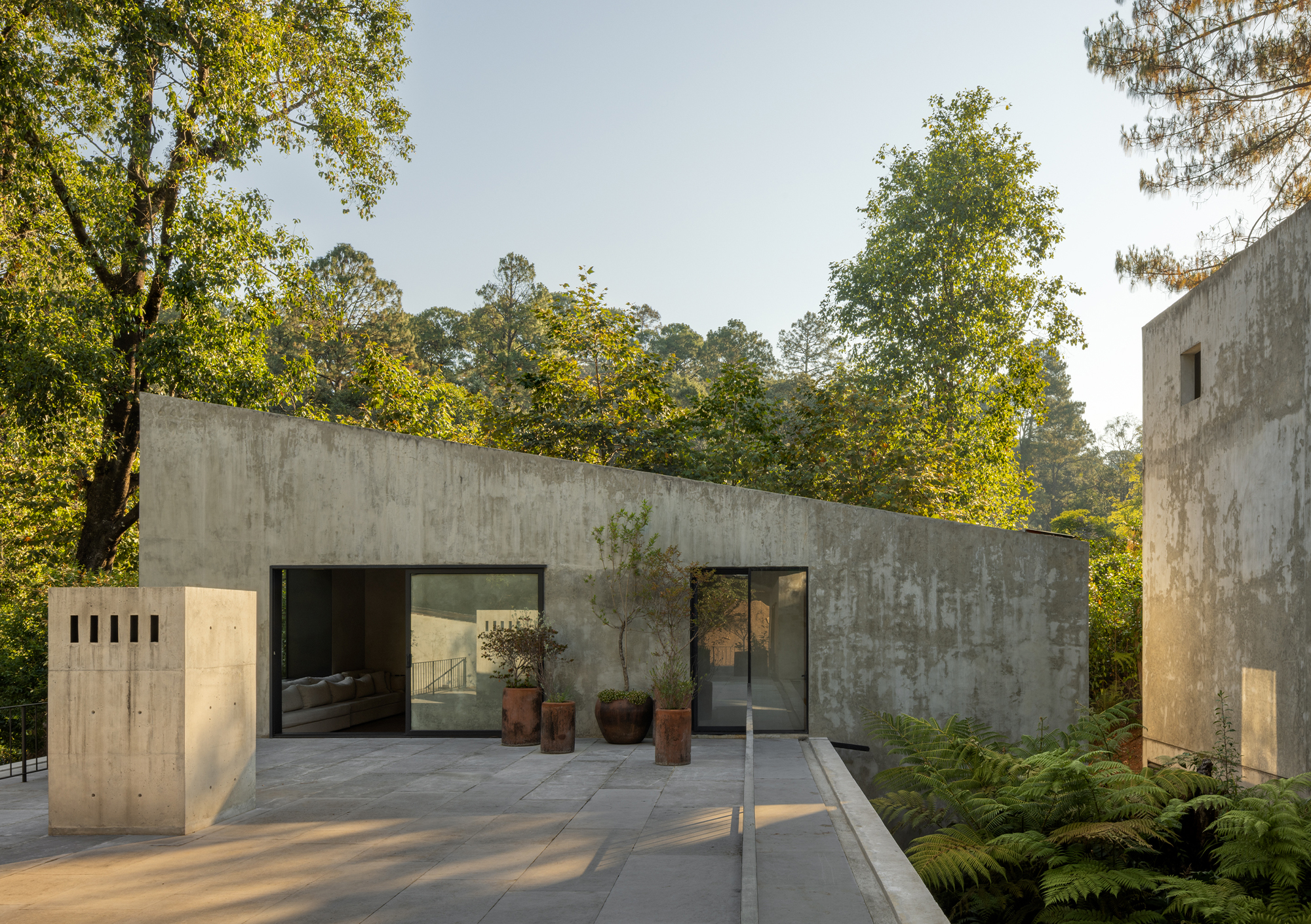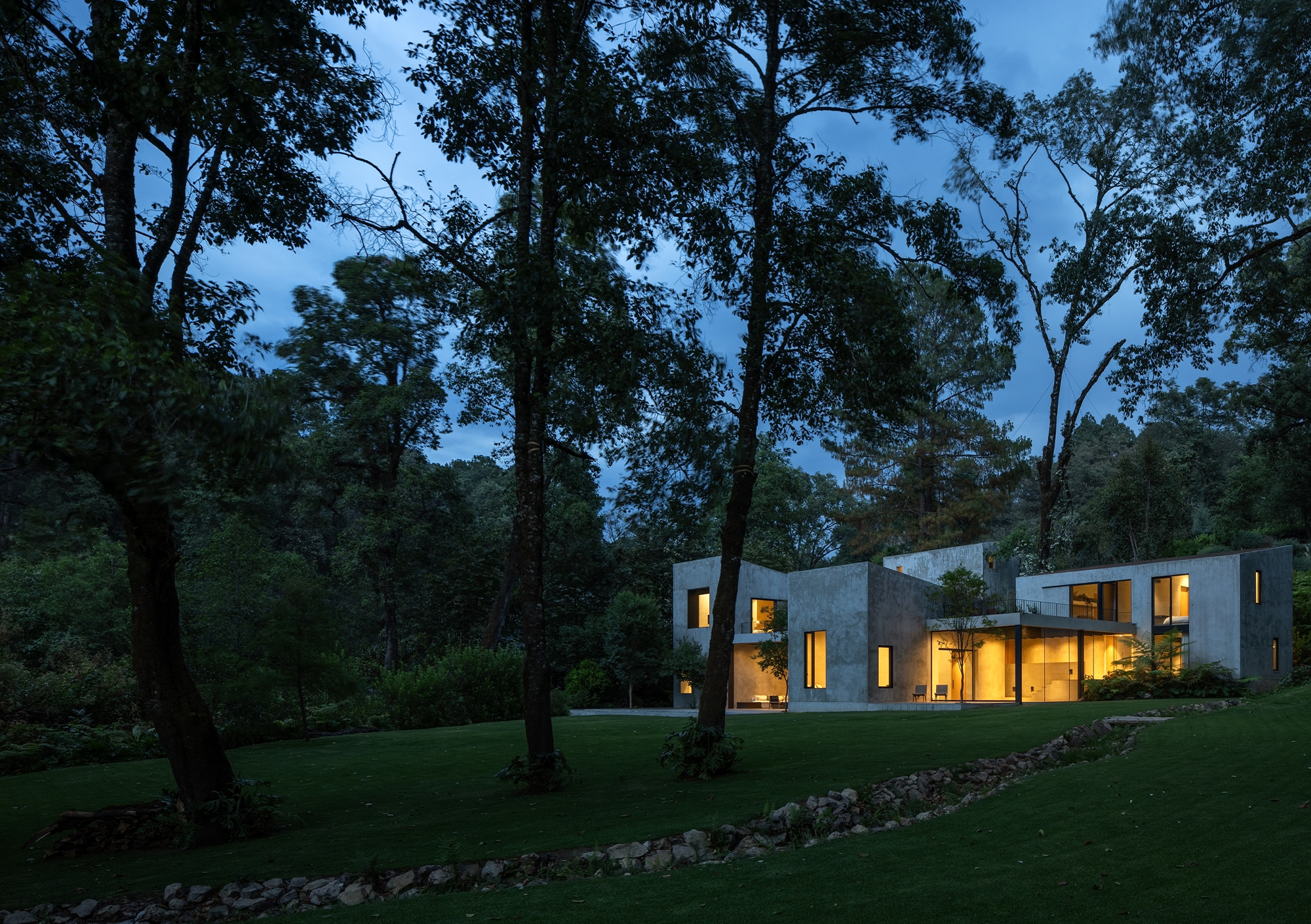Set within the lush forests of Avándaro, this residence perches on a vegetated slope, with a steep topography guiding rainwater toward a neighboring stream. The home's orientation and spatial configuration respond to the terrain's contours and the layout of ancient trees, allowing the main façade to face north and open toward the stream, inviting in a steady flow of natural light. A central void emerges from the interlocking volumes, creating an interior garden that preserves the towering pines and oaks on the site while letting southern sunlight naturally warm up the space.
The project is composed of two primary spatial types: solid enclosed volumes and an overarching structure that unites three of these, forming the core gathering space—a dynamic, open living area encased in glass to embrace its surroundings. This space is covered by a lightweight concrete slab supported by steel beams, merging openness with structural strength.
The volumes serve as the primary structure of the house, housing the private spaces and maintaining controlled views through strategically placed windows. These closed areas are designated for rest, cooking, or family time. There are four distinct solid volumes. One contains two mirrored bedrooms. Another holds a TV or family room that can serve as an additional sleeping area. The third volume features the kitchen on the ground floor, a study on the intermediate level, and the master bedroom on the top floor. The fourth, set apart from the others, contains the cistern, mechanical room, service areas, and parking.
